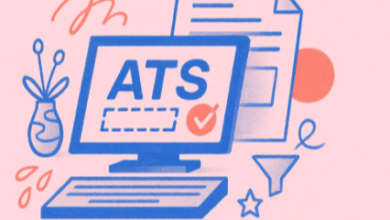Understanding Reverse Mortgages: A Financial Solution for Older Australians

As Australians age, many find themselves in a situation where they are asset-rich but cash-poor. Their homes may have significant value, but they may not have enough liquid funds to maintain their lifestyle, cover healthcare costs, or handle unexpected expenses during retirement. For many, a reverse mortgage presents a practical solution, offering access to the equity in their home without requiring them to sell or move.
In this article, we will explore how reverse mortgages Australia work, their benefits and drawbacks, eligibility criteria, and why they may be an ideal financial solution for older Australians looking to improve their retirement security.
What Is a Reverse Mortgage?
A reverse mortgage is a special type of home loan available to older homeowners. Unlike traditional mortgages, which require regular repayments, a reverse mortgage allows homeowners to borrow against the value of their home without making ongoing monthly payments.
The loan is typically repaid only when the homeowner sells the property, moves into aged care, or passes away. The amount available depends on several factors, including the homeowner’s age, the property’s value, and the lender’s policies. Older borrowers generally have access to a higher percentage of their home’s value.
The main idea behind a reverse mortgage is to unlock the financial value of the home, enabling retirees to supplement their retirement income, manage expenses, or enjoy a better quality of life.
How Does a Reverse Mortgage Work?
Reverse mortgages offer flexibility in how the funds are accessed. Borrowers can usually choose from the following options:
- Lump Sum: Receive a one-time payment for large expenses or significant purchases.
- Regular Payments: Receive scheduled payments, similar to an annuity, to supplement monthly living expenses.
- Line of Credit: Access funds as needed, offering flexibility and control over withdrawals.
- Combination: Some borrowers may choose a mix of lump sum, regular payments, and a line of credit.
The interest on a reverse mortgage is added to the loan balance over time, meaning the debt grows rather than requires monthly repayments. A key feature is the no negative equity guarantee, ensuring that homeowners or their estates will never owe more than the property’s sale value when the loan is repaid.
Eligibility Criteria for Reverse Mortgages in Australia
To qualify for a reverse mortgage, there are several requirements:
- Age: The youngest borrower must be at least 60 years old. Older applicants often receive access to a larger proportion of the property’s value.
- Homeownership: Applicants must own their property outright or have a minimal mortgage balance.
- Property Type: The property must be the primary residence and meet lender standards. Certain property types, such as apartments in some strata schemes, may not be eligible.
- Location: The property must be located in an area approved by the lender. Some regional or remote areas may have restrictions.
It’s essential for prospective borrowers to consult with a financial advisor or a reverse mortgage broker to determine eligibility and ensure the loan aligns with their financial goals.
See also: Food Handlers Medical Test – Protecting Both Customers & Businesses
Advantages of Reverse Mortgages
There are several compelling reasons why older Australians may consider a reverse mortgage:
1. Access to Funds Without Selling the Home
Reverse mortgages allow homeowners to tap into their home equity while remaining in their residence. This is ideal for those who want to maintain independence and continue living in their familiar environment.
2. No Monthly Repayments
Unlike traditional loans, reverse mortgages do not require monthly payments, reducing financial stress and helping retirees manage their budget more effectively.
3. Flexibility in Receiving Funds
Borrowers can choose a lump sum, regular payments, line of credit, or a combination, depending on their needs. This flexibility ensures the loan can be tailored to cover healthcare costs, home renovations, travel, or daily living expenses.
4. Preservation of Government Benefits
Reverse mortgages typically do not impact eligibility for Age Pension payments, unlike other forms of income or asset withdrawals. This allows retirees to supplement their income without losing government support.
5. No Negative Equity Guarantee
Borrowers or their estates will never owe more than the sale price of the property, providing peace of mind that the debt will not exceed the home’s value.
Is a Reverse Mortgage Right for You?
A reverse mortgage can be a valuable financial tool, but it is not suitable for everyone. Prospective borrowers should consider the following:
- Financial Goals: Are you seeking to supplement retirement income, cover healthcare costs, or enjoy a better lifestyle?
- Longevity in the Home: If you plan to stay in your home long-term, a reverse mortgage can be advantageous.
- Inheritance Considerations: Understand how the loan may affect what you leave to your beneficiaries.
- Alternative Options: Explore downsizing, superannuation drawdowns, or government programs to see if they better suit your needs.
Consulting a reverse mortgage loan broker or financial advisor is highly recommended. They can provide a detailed assessment, explain options, and help tailor a solution that aligns with your circumstances.
Key Takeaways
- Reverse mortgages Australia allow older homeowners to access the equity in their homes without regular repayments.
- Borrowers can choose how they receive funds—lump sum, regular payments, line of credit, or a combination.
- Eligibility generally requires homeownership, age 60+, and a property that meets lender requirements.
- Advantages include access to funds, flexibility, no monthly repayments, and a no negative equity guarantee.
- Disadvantages include accumulating debt, reduced inheritance, fees, and complexity.
- Government-backed schemes like HEAS offer lower-cost alternatives for Age Pension recipients.
A reverse mortgage can improve retirement security, support lifestyle goals, and provide peace of mind for older Australians who wish to remain in their homes while accessing funds. However, careful consideration, professional advice, and a thorough understanding of costs and conditions are essential.
Conclusion
A reverse mortgage can be a powerful financial solution for older Australians seeking to access the equity in their homes while maintaining independence and security in retirement. It offers flexibility, eliminates the burden of monthly repayments, and allows homeowners to stay in their property while supplementing their income or covering essential expenses.
However, like any financial product, reverse mortgages come with considerations such as accumulating interest, potential impacts on inheritance, and associated fees. Carefully weighing the advantages and disadvantages, seeking professional advice, and exploring alternative options is crucial before making a decision.




